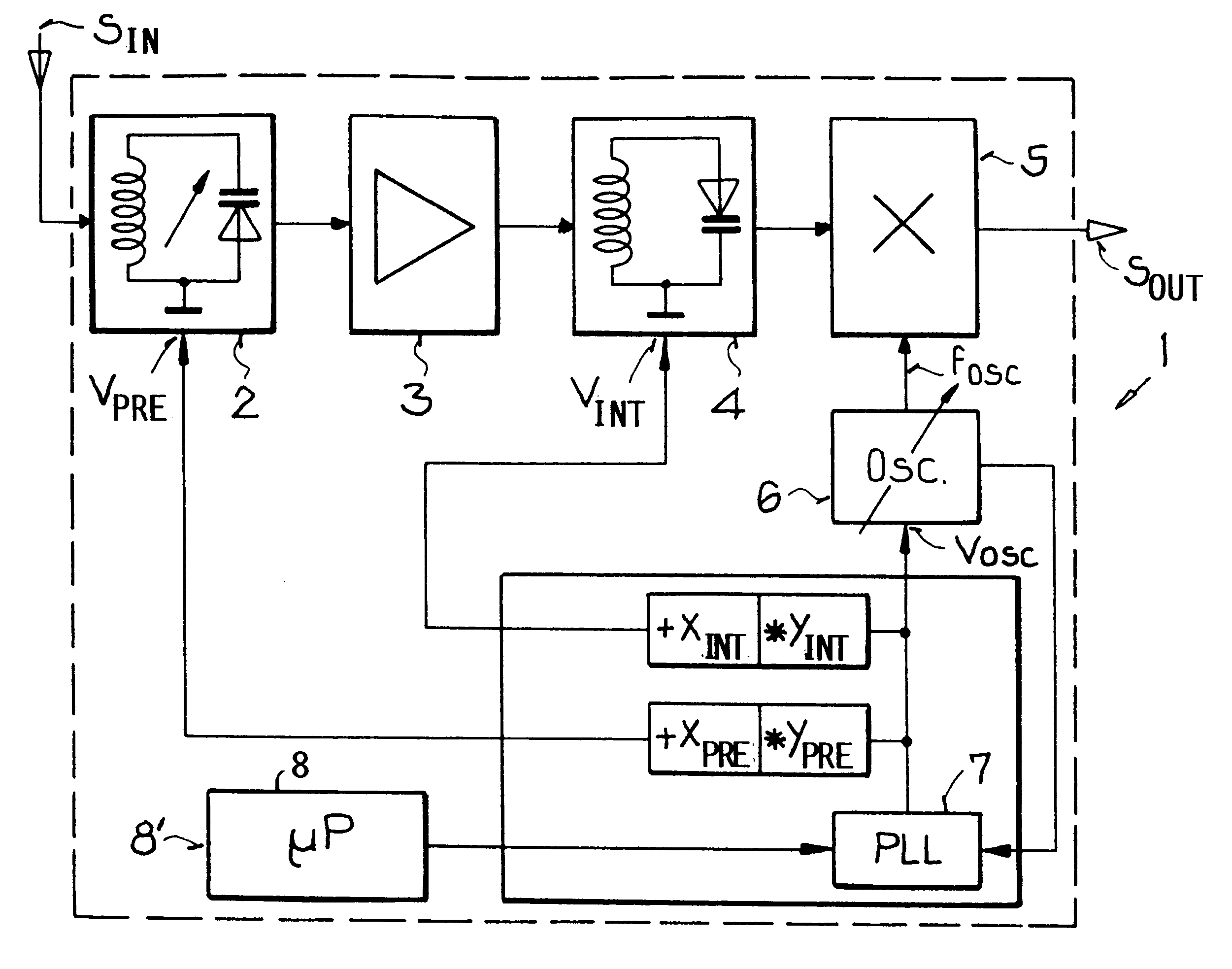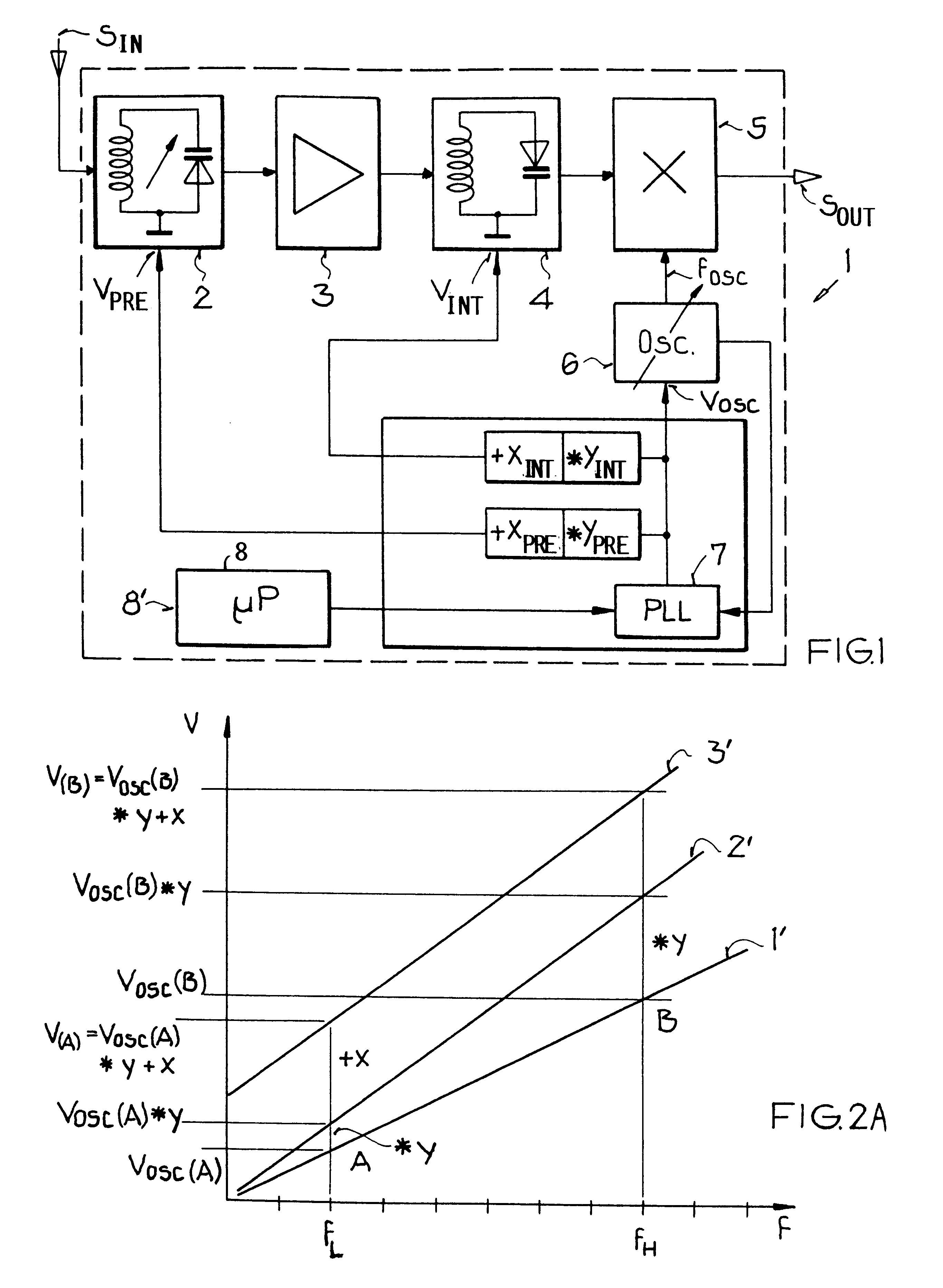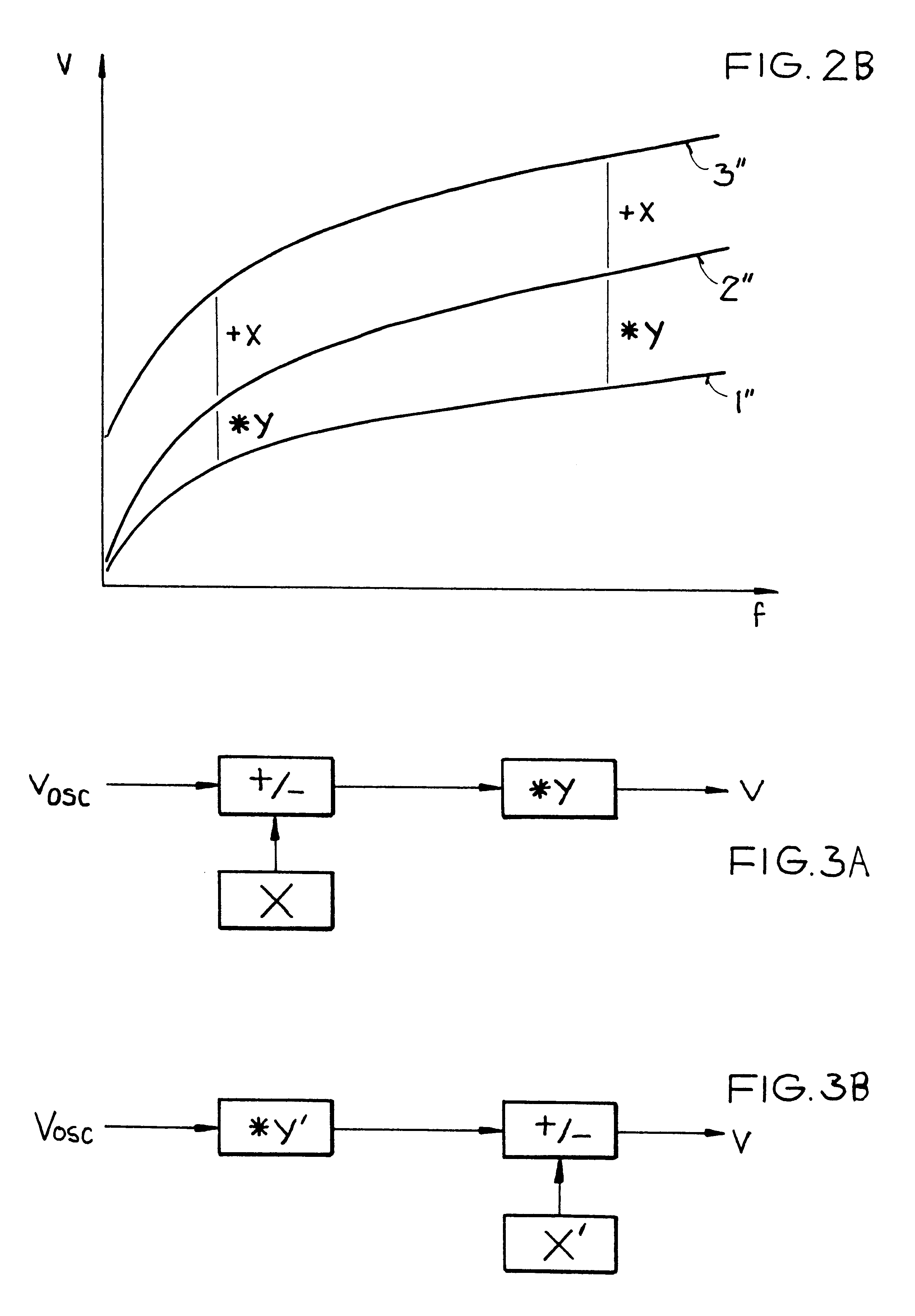Method of calibrating a multistage selective amplifier
a selective amplifier and multi-stage technology, applied in the direction of continuous tuning, multi-resonant circuit tuned to different frequencies, television systems, etc., can solve the problems of high memory space requirement, difficulty and disadvantages of prior art methods of achieving such calibrating and tuning of multi-stage selective amplifiers,
- Summary
- Abstract
- Description
- Claims
- Application Information
AI Technical Summary
Benefits of technology
Problems solved by technology
Method used
Image
Examples
Embodiment Construction
FIG. 1 schematically shows a block circuit diagram of a tuning circuit 1 according to the invention, i.e. a tuning circuit 1 for carrying out the method according to the invention. In this example embodiment, the input signals S.sub.I, such as TV or radio broadcast signals, are first filtered according to the respective selected receiving frequency in the pre-circuit or input circuit 2 and are then passed on to an amplifier 3, where the filtered signals are correspondingly amplified. Next, the filtered and amplified signals are provided to an intermediate circuit 4, which again filters the signals based on the receiving frequency or frequency range. The remaining signals at the output of the intermediate circuit 4 are provided into a mixer 5, which also receives an oscillator frequency signal F.sub.OSC from an oscillator circuit 6. The mixer 5 then filters out the remaining signals provided from the intermediate circuit 4 exactly to a prescribed third frequency dependent on or provi...
PUM
 Login to View More
Login to View More Abstract
Description
Claims
Application Information
 Login to View More
Login to View More - R&D
- Intellectual Property
- Life Sciences
- Materials
- Tech Scout
- Unparalleled Data Quality
- Higher Quality Content
- 60% Fewer Hallucinations
Browse by: Latest US Patents, China's latest patents, Technical Efficacy Thesaurus, Application Domain, Technology Topic, Popular Technical Reports.
© 2025 PatSnap. All rights reserved.Legal|Privacy policy|Modern Slavery Act Transparency Statement|Sitemap|About US| Contact US: help@patsnap.com



